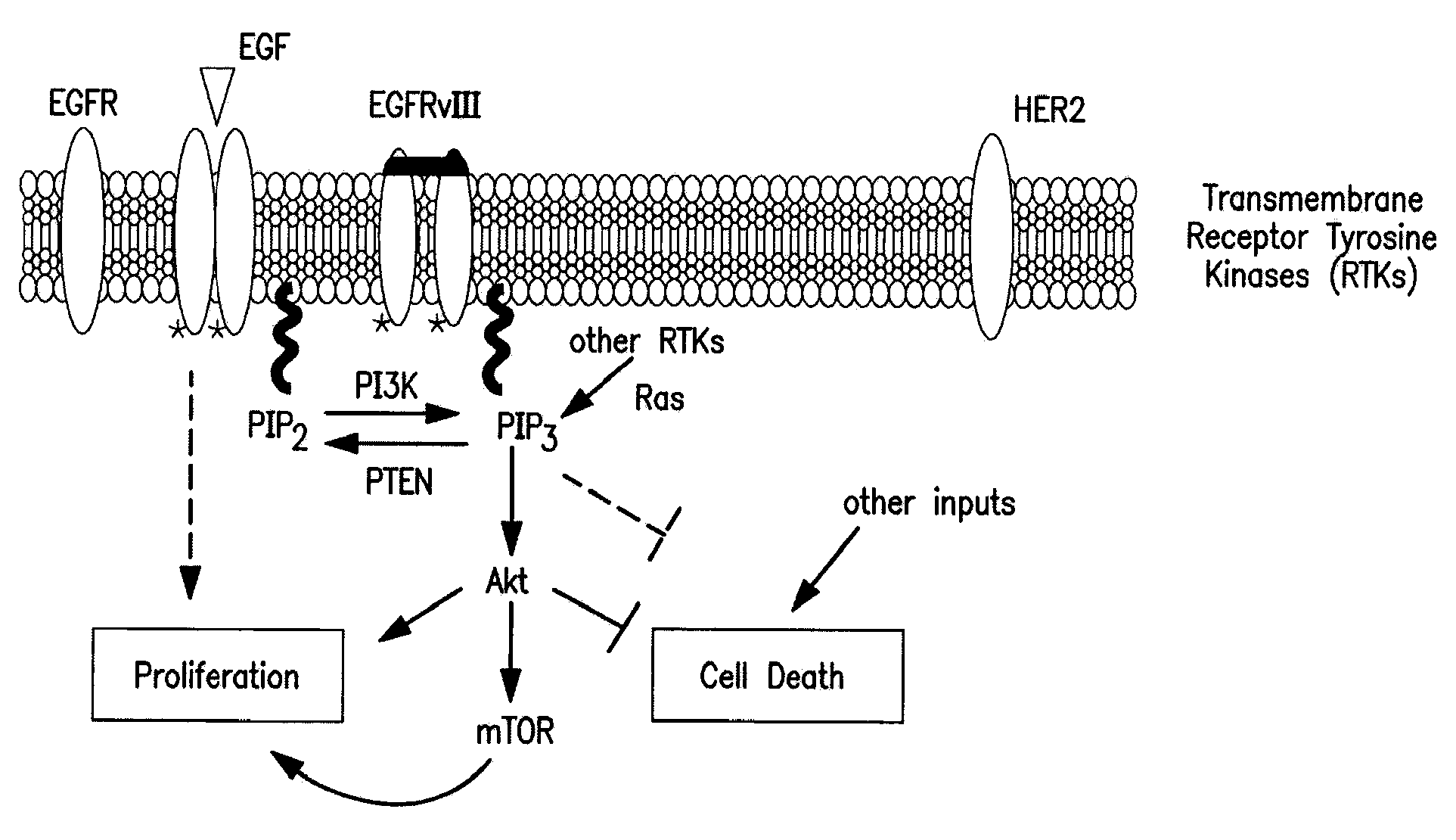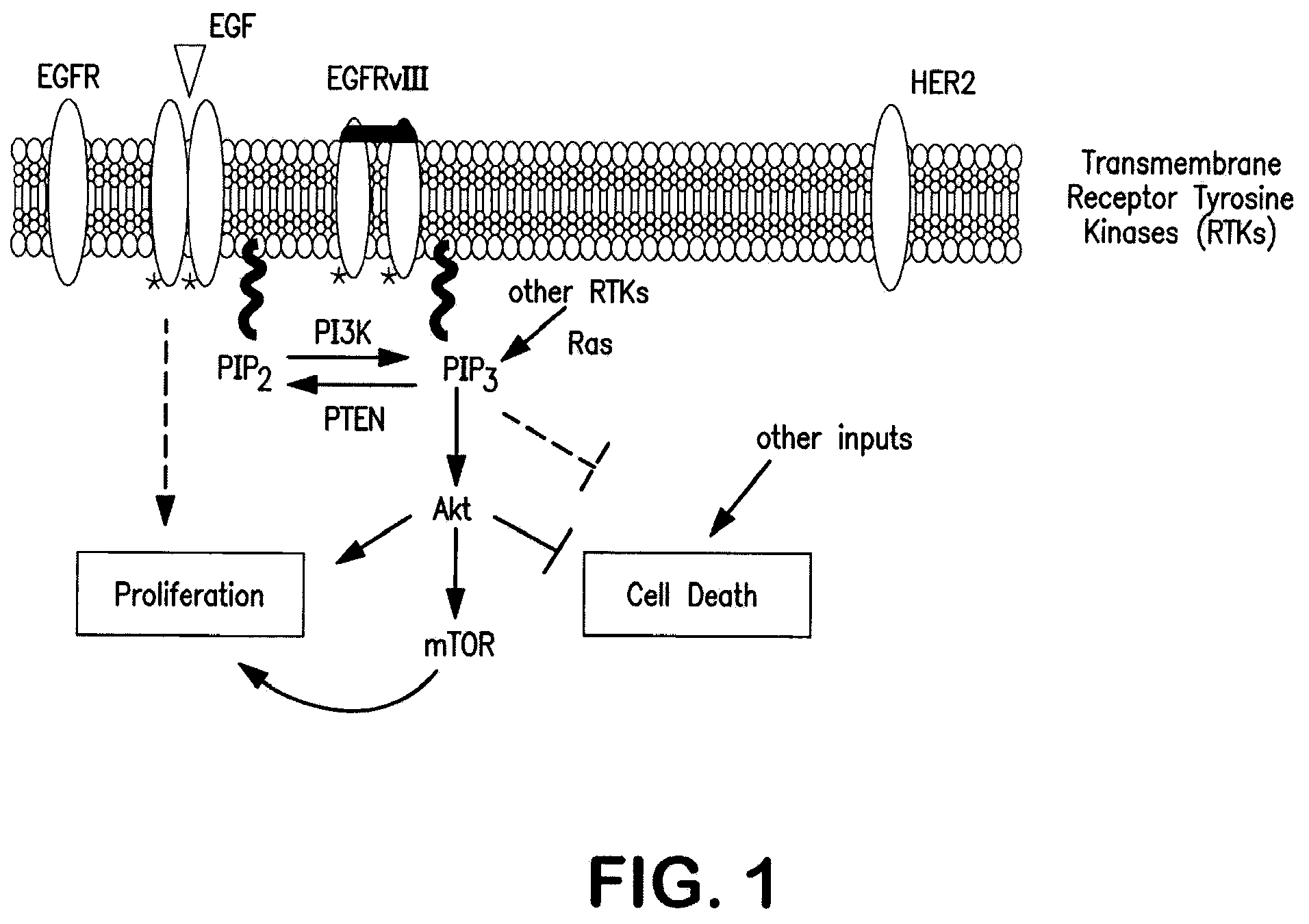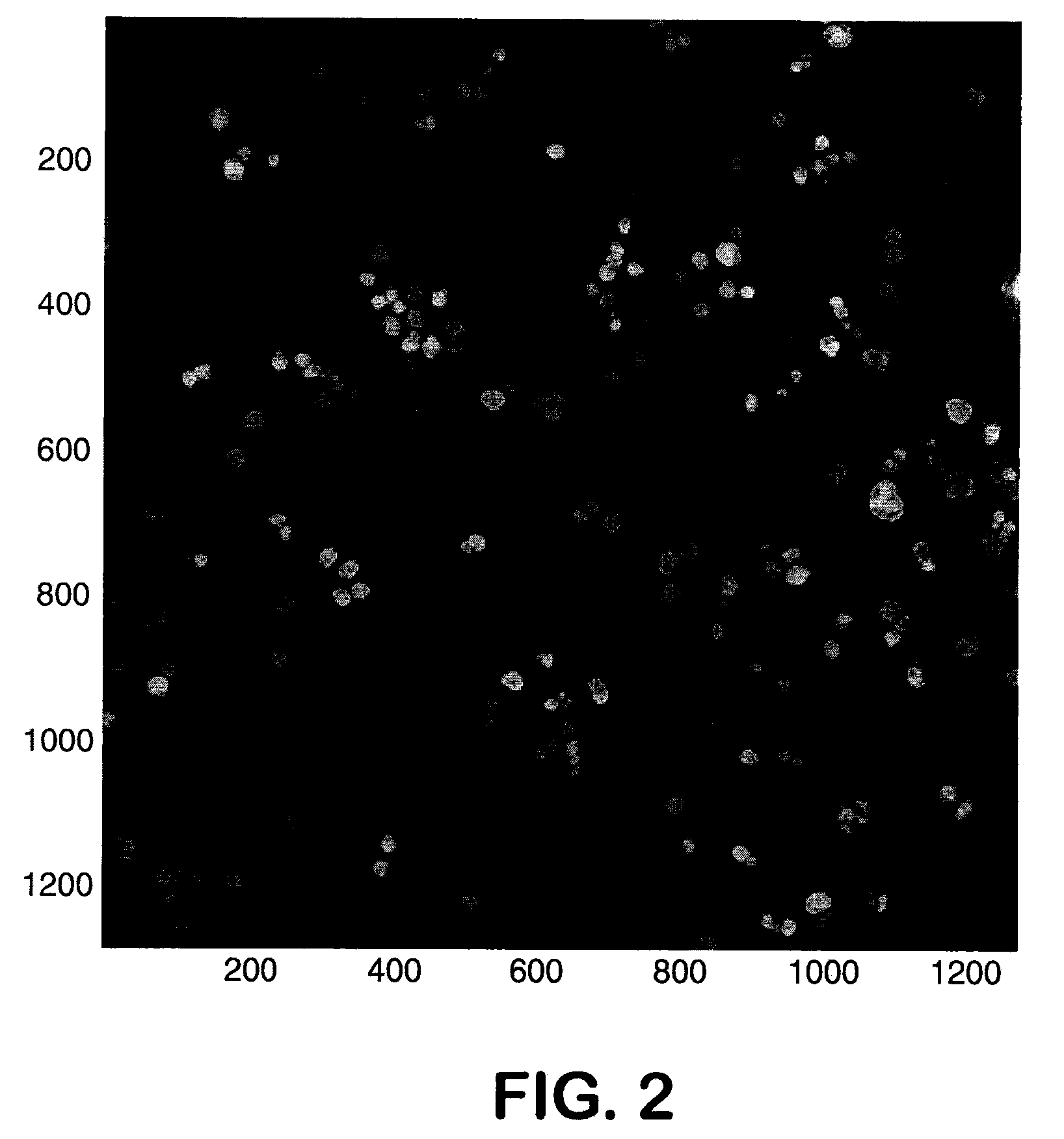Method for determining the effects of external stimuli on biological pathways in living cells
a biological pathway and external stimuli technology, applied in the field of system biology, can solve the problems of large amount of detailed information of such different types, difficult analysis, and large redundancy
- Summary
- Abstract
- Description
- Claims
- Application Information
AI Technical Summary
Benefits of technology
Problems solved by technology
Method used
Image
Examples
example 1
Assays of Living Cancer Cells Prior and after Exposure to a Cancer Drug
[0113]In trials treating patients with EGFR kinase inhibitors, it has been seen that tumors profiled by typical pre-treatment methods showed molecular signs consistent with dependence on EGFR kinase pathway and some signs of sensitivity to EGFR kinase inhibitors. Even with these findings, most of the patients' tumors were resistant to the treatment, despite initial responsiveness. It is now felt that the reason for this phenomenon is that there are one or more escape pathways that circumvent the tumors' addiction to the EGFR pathway. This is illustrated in FIG. 1.
[0114]Observations showing that a deficiency or mutation of PTEN is common in resistant patients led to hypothesis that this condition is circumventing the EGFR dependency, and causing resistance to EGFR kinase pathway inhibitors. PTEN is an antagonist to PI3K's effect of phyosphorylating PIP2 to PIP3. High concentrations of PIP3 drive the Akt / mTOR pathw...
example 2
Measuring Promoter Responses
[0124]In order to observe cellular processes invoked by a particular stimulus and differences in the processes that are invoked in differing cell, experiments were carried out so that one or more promoters' responses may be tracked by the fluorescent protein expression.
[0125]For each promoter of interest, an artificial construct was produced which places the coding sequence of a fluorescent protein under the control of a specific promoter. For this example, a lentiviral system (Invitrogen Gateway pLenti6 / R4R2 / V5-DEST) was used, which allows for rapid, modular, combinatorial assembly of promoters and reporters. Three sequences from the promoter region of the genes for EGR1 (i.e., early growth response 1; SEQ ID NO: 1), MYC (v-myc myelocytomatosis viral oncogene homolog; SEQ ID NO:2), and JUN (jun oncogene; SEQ ID NO:3) were recovered from normal human DNA by PCR amplification and directionally cloned into pENTR™5′-TOPO (Invitrogen) plasmids. A fluorescent ...
PUM
| Property | Measurement | Unit |
|---|---|---|
| Time | aaaaa | aaaaa |
| Pressure | aaaaa | aaaaa |
| Cell death | aaaaa | aaaaa |
Abstract
Description
Claims
Application Information
 Login to View More
Login to View More - R&D
- Intellectual Property
- Life Sciences
- Materials
- Tech Scout
- Unparalleled Data Quality
- Higher Quality Content
- 60% Fewer Hallucinations
Browse by: Latest US Patents, China's latest patents, Technical Efficacy Thesaurus, Application Domain, Technology Topic, Popular Technical Reports.
© 2025 PatSnap. All rights reserved.Legal|Privacy policy|Modern Slavery Act Transparency Statement|Sitemap|About US| Contact US: help@patsnap.com



